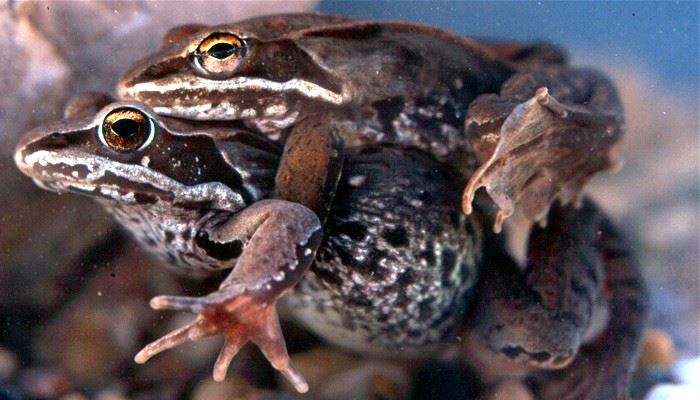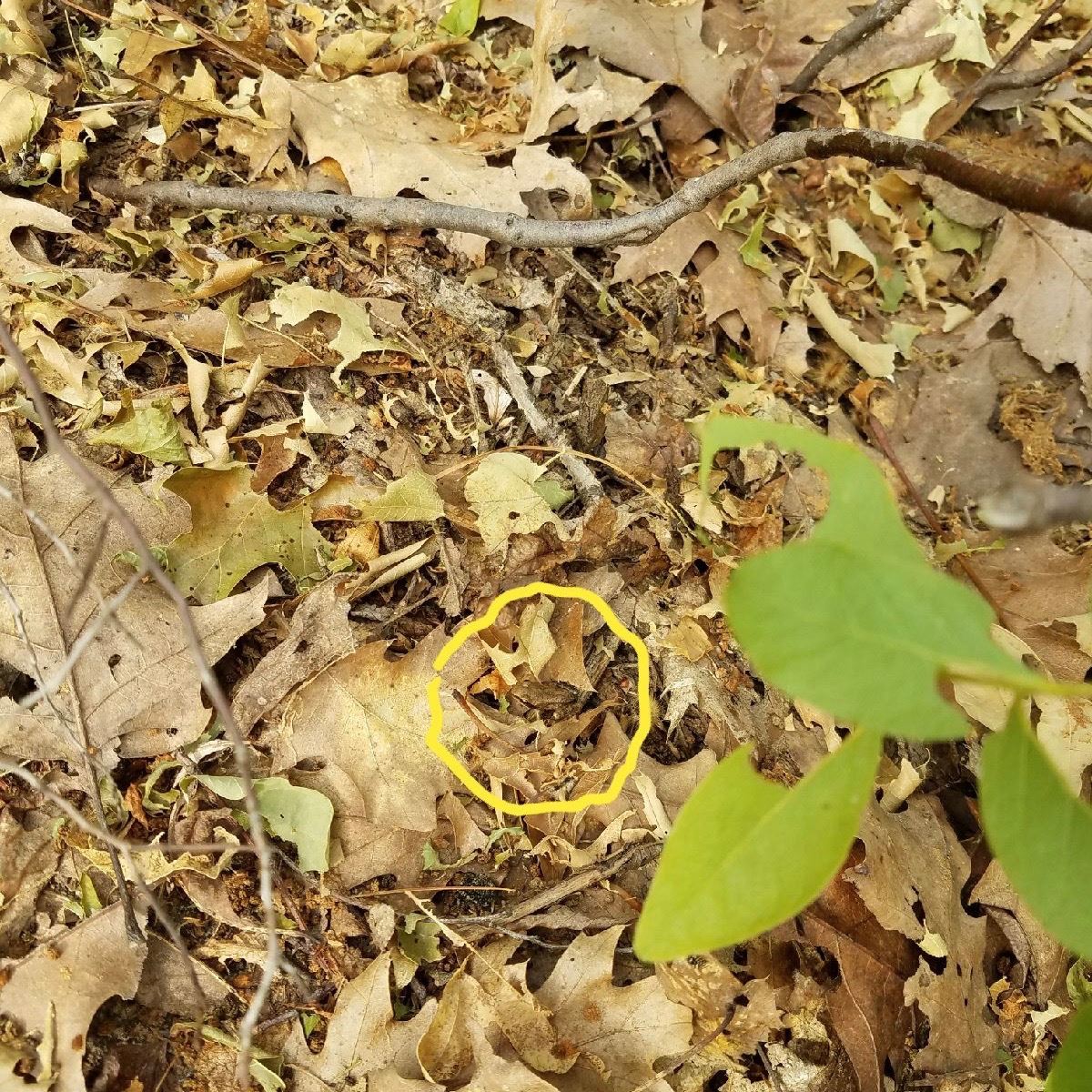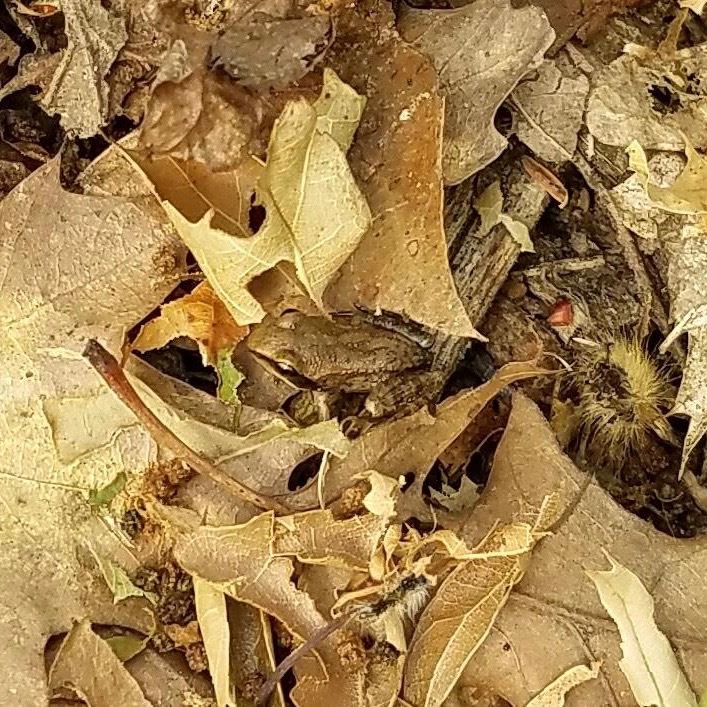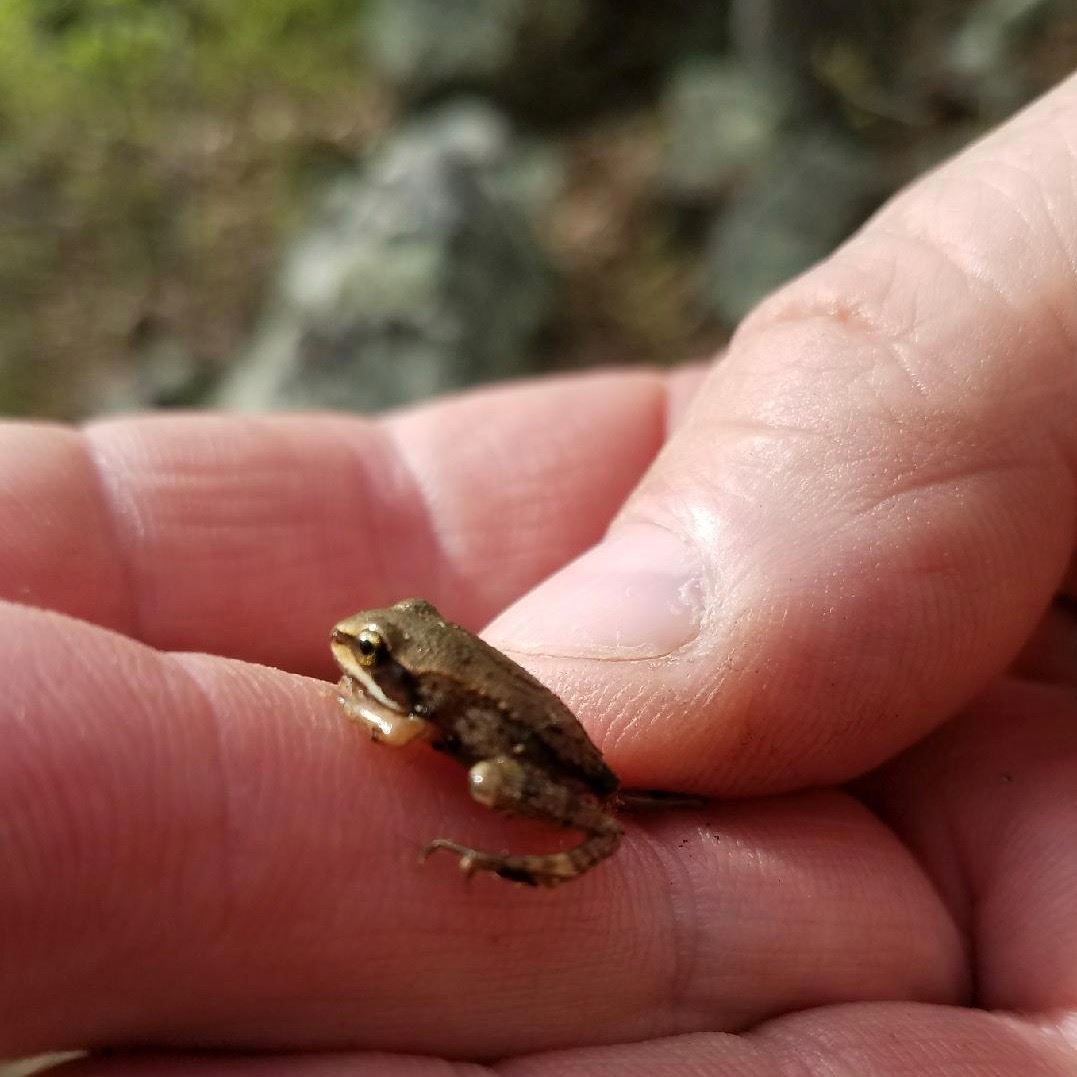- HOME
- Wildlife We Love
- Calling All Critters
- Wood Frog

Wood Frog
*Please note that clicking a link below will take you to a different website. To return to this page, simply close the new tab or window that opens. The wood frog (Rana sylvatica)[1][2][3] has a broad distribution over North America, extending from the southern Appalachians to the boreal forest with several notable disjunct populations including lowland eastern North Carolina. The wood frog has garnered attention by biologists over the last century because of its freeze tolerance, relatively great degree of terrestrialism (for a Ranid), interesting habitat associations (peat bogs, vernal pools, uplands), and relatively long-range movements. EcologyThe ecology and conservation of the wood frog has attracted a great deal of research attention in recent years. This may be because they are often considered “obligate” breeders in ephemeral wetlands (sometimes called “vernal pools”) that are themselves more imperiled than the species that breed in them (see below). The wood frog is the state amphibian of New York. Similar to other northern frogs that hibernate close to the surface in soil and/or leaf litter, wood frogs can tolerate the freezing of their blood and other tissues.[4][5] Urea is accumulated in tissues in preparation for overwintering, and liver glycogen is converted in large quantities to glucose in response to internal ice formation. Both urea and glucose act as “cryoprotectants” to limit the amount of ice that forms and to reduce osmotic shrinkage of cells. Frogs can survive many freeze/thaw events during winter if no more than about 65% of the total body water freezes. ReproductionRana sylvatica primarily breeds in ephemeral pools rather than permanent water bodies such as ponds or lakes.[14] This is believed to provide some protection of the adult frogs and their offspring (eggs and tadpoles) from predation by fish and other predators of permanent water bodies. Adult wood frogs emerge from hibernation in early spring and migrate to nearby pools. There, males chorus, emitting duck-like quacking sounds. The males approach the females and clasp her behind her forearms before hooking his thumbs together around her in a hold called “amplexus” which is continued until the female deposits the eggs.[7][14] Females deposit eggs attached to submerged substrate, typically vegetation or downed branches. Most commonly, females will deposit eggs adjacent to other egg masses, creating large aggregations of masses.[7][14][15] Some advantage is conferred to pairs first to breed, as clutches closer to the center of the raft absorb heat and develop faster than those on the periphery, and have more protection from predators.[7][14] If pools dry before tadpoles metamorphose into froglets, they die.[7] This constitutes the risk counterbalancing the anti-predator protection of ephemeral pools. By breeding in early spring, however, wood frogs increase their offspring’s chances of metamorphosing before pools dry. The larvae undergo two stages of development: fertilization to free-living tadpoles, and free-living tadpoles to juvenile frogs.[16][17] During the first stage, the larvae are adapted for rapid development, and the growth depends on the temperature of the water and has a higher mortality rate.[17][18] The second stage of development features rapid development and growth, and depends on environmental factors including food availability, temperature, and population density.[17]
Cape Ann Vernal Pool Team * P.O. Box 39 * Gloucester, MA 01931 |




